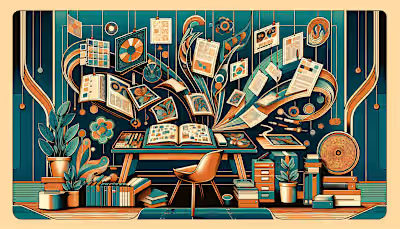Red Flags When Evaluating a Potential Graphic Designer

Red Flags When Evaluating a Potential Graphic Designer
Why It Matters
Warning Signs to Notice
1. Unclear Contracts
2. Uncertain Payment Terms
Payment Pitfalls
3. Inconsistent Quotes
Communication Clues
4. Slow or Vague Replies
5. No Discovery Process
Portfolio Checks
6. Recycled Templates
7. Erratic Quality
Contract and Ownership Risks
8. Restrictive IP Rules
Strategic Fit
9. No Focus on Results
Frequently Asked Questions about Evaluating Designers
How do I check if a designer understands my brand?
Is it okay to pay a designer entirely by the hour?
Do I need a lawyer to review my contract?
Parting Advice
Red Flags When Evaluating a Potential Graphic Designer
Why It Matters
“Design isn’t just about visuals. It’s about working styles, trust, and timing. A bad fit is rarely just about talent.”
Warning Signs to Notice
1. Unclear Contracts
“If a designer sends a contract with three bullet points and 'let's figure the rest out later'—that's not flexibility, that's a liability.”
2. Uncertain Payment Terms
“If the estimate changes every time you ask a new question, you’re not getting a quote—you’re getting a guess.”
Payment Pitfalls
“Transparent pricing isn’t just about fairness—it's about keeping the project on track and the relationship intact.”
3. Inconsistent Quotes
“If the quote feels like a round number with no breakdown, assume you’ll be paying more later—or getting less.”
Communication Clues
4. Slow or Vague Replies
“A designer who says ‘soon’ often means ‘I forgot.’”
5. No Discovery Process
“If your designer never asks who the audience is, they’re probably designing for themselves.”
Portfolio Checks
6. Recycled Templates
“If three brands in a portfolio feel like the same brand in different colors, it’s not a portfolio—it’s a product catalog.”
7. Erratic Quality
“A portfolio where the design quality changes project to project is like a résumé with three fonts—hard to trust.”
Contract and Ownership Risks
“Paying for a design doesn’t always mean you own it. Sometimes you’ve just rented it for a while.”
8. Restrictive IP Rules
“Nothing says ‘surprise invoice’ like needing to pay again just to update your own logo.”
Strategic Fit
“A beautiful landing page that doesn’t convert is just a fancy poster.”
9. No Focus on Results
Frequently Asked Questions about Evaluating Designers
How do I check if a designer understands my brand?
“What would you keep and what would you change?”
Is it okay to pay a designer entirely by the hour?
“Hourly pricing without a cap is like an open tab at a bar. It works fine—until it doesn’t.”
Do I need a lawyer to review my contract?
“If you can’t explain the contract to someone else in one sentence per section, you might not understand it yourself.”
Parting Advice
“If something feels unclear in the first conversation, it usually becomes a problem in the third week.”
Posted Apr 15, 2025
Red flags when evaluating a potential graphic designer include vague contracts, unclear pricing, and poor communication—spot them before hiring.









